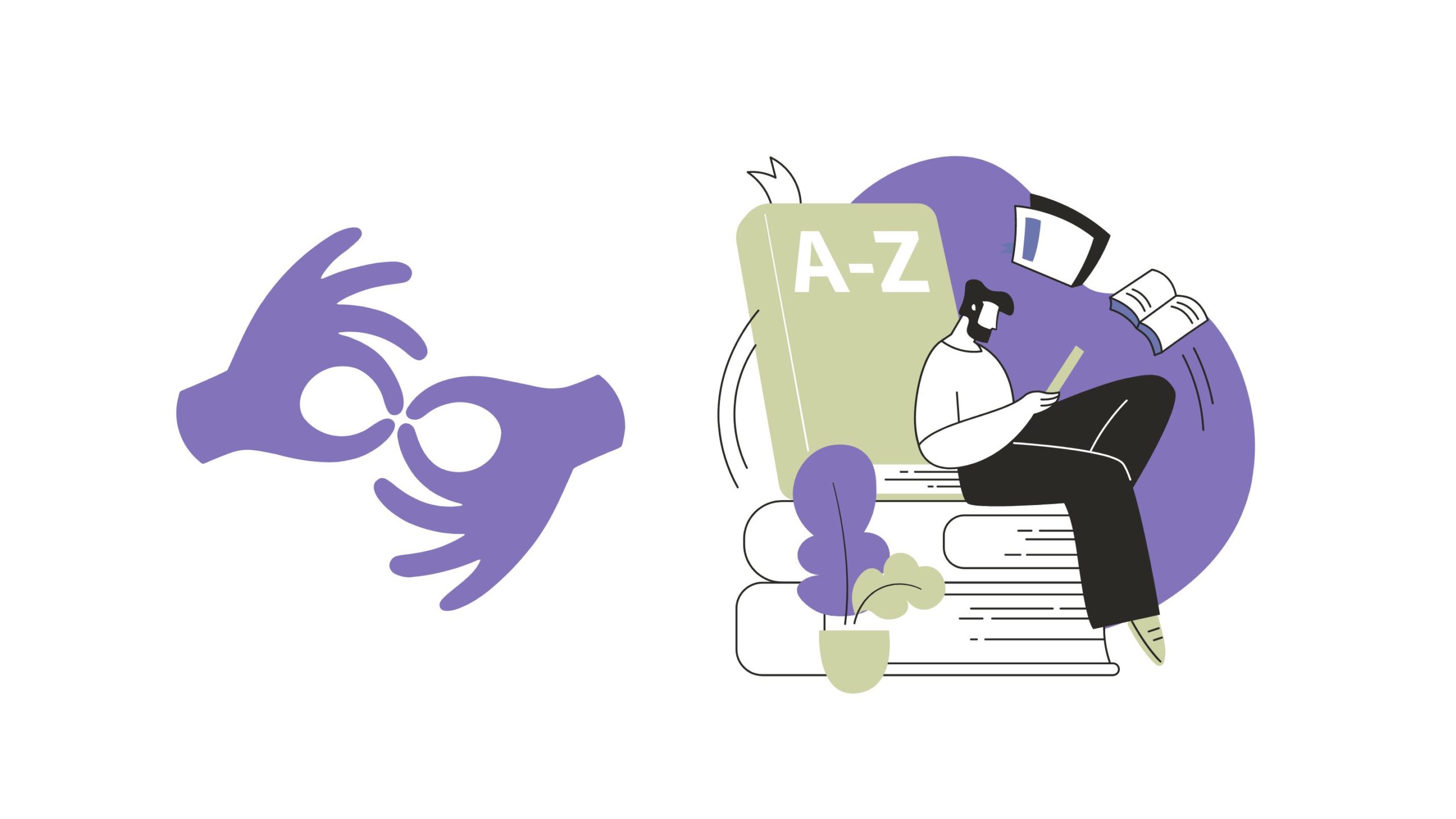Insights
all insights
Understanding Terminology in Deaf Culture
Deaf culture is a rich and vibrant community that has its own unique language, customs, and social norms. Just like any culture, Deaf culture has its own set of terminologies that may be unfamiliar to those outside of the community. By understanding and embracing the appropriate terminology we demonstrate respect for the rich culture and identity of the Deaf community.
American Sign Language (ASL)
American Sign Language, also known as ASL, is a complete and distinct language that has the same linguistic properties as spoken languages and its own grammar and syntax. American Sign Language has more complex aspects because it is a visual language that uses space, sign placement, eye gaze, and other unique features to convey meaning. ASL is primarily expressed with the hands and face. It is the first language of many Deaf and hard-of-hearing individuals.
Deaf vs. deaf
One of the fundamental distinctions within the Deaf community is the capitalization of the word “Deaf.” When spelled with a capital “D,” Deaf refers to individuals who identify themselves as members of Deaf culture. They may have been born Deaf or become part of the community through shared experiences, language, and cultural connections. On the other hand, when spelled with a lowercase “d,” the term “deaf” is used to describe the audiological condition of not hearing.
Hearing Impaired vs. Deaf
While some people might think these terms are interchangeable, it is essential to recognize the preference of the Deaf community. The term “hearing impaired” is often seen as medical and focuses on the deficiency of hearing, whereas “Deaf” highlights the cultural identity and pride within the Deaf community. Embracing “Deaf” rather than “hearing impaired” respects the positive aspects of Deaf culture and rejects the notion that Deaf individuals need to be “fixed” or “cured.”
Children of Deaf Adults (CODA)
CODA stands for “Children of Deaf Adults” and refers to individuals who were born into Deaf families but have full hearing capabilities. CODAs often have unique insights into Deaf culture and are bilingual, proficient in both ASL and spoken language. Understanding the experiences of CODAs is vital in comprehending the multi-faceted dynamics of the Deaf community.
Deaf Gain
Deaf gain is a concept based on the idea that Deafness is not a disability, but an identity and culture that offers unique perspectives and potential. Deaf Gain reframes being Deaf from a loss to a gain and suggests multiple ways in which Deaf people contribute to the diversity of the world. The potential of Deaf gain is vast and it benefits hearing people. This means that rather than viewing Deafness as something to be fixed or cured, it is viewed as something that can offer unique contributions and benefits to our society.
ASL vs. Signed English
American Sign Language (ASL) is a natural language with its own grammar and syntax. It is essential to differentiate ASL from Signed English, which follows English grammar rules and word order but is signed manually. ASL is the primary mode of communication within the Deaf community, emphasizing the significance of this visual language in fostering cultural connections and self-expression.
Coming Together
In an increasingly interconnected world, cultural understanding is essential, and embracing Deaf culture begins with acknowledging and appreciating the power of language in shaping identity and belonging. By understanding the significance of terms like “Deaf” with a capital “D,” differentiating between ASL and Signed English, and recognizing the experiences of CODAs, we can foster inclusivity and strengthen the bonds within our diverse communities. Together we can strive to make our society a place where every individual’s language and identity are valued and respected.
